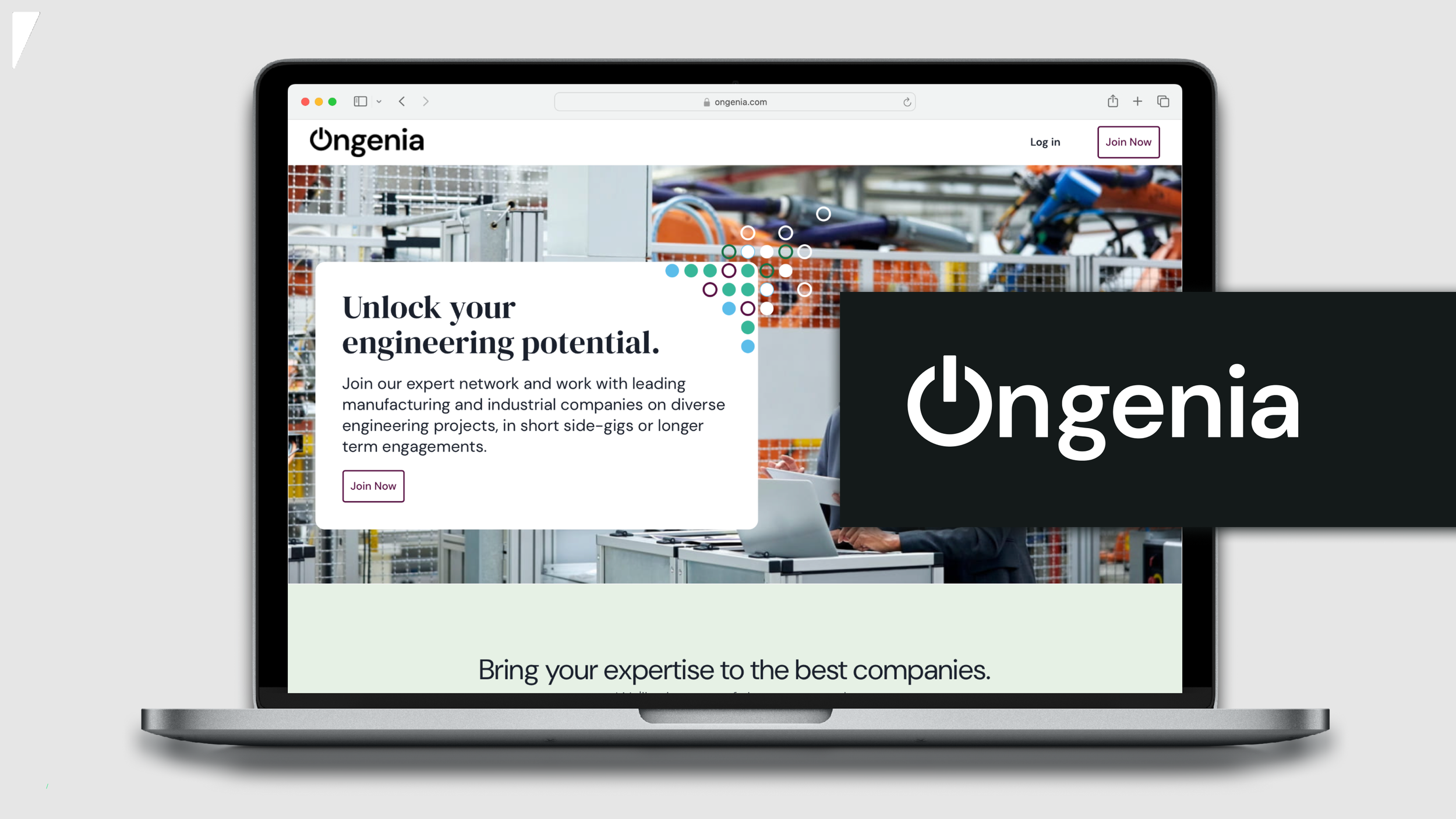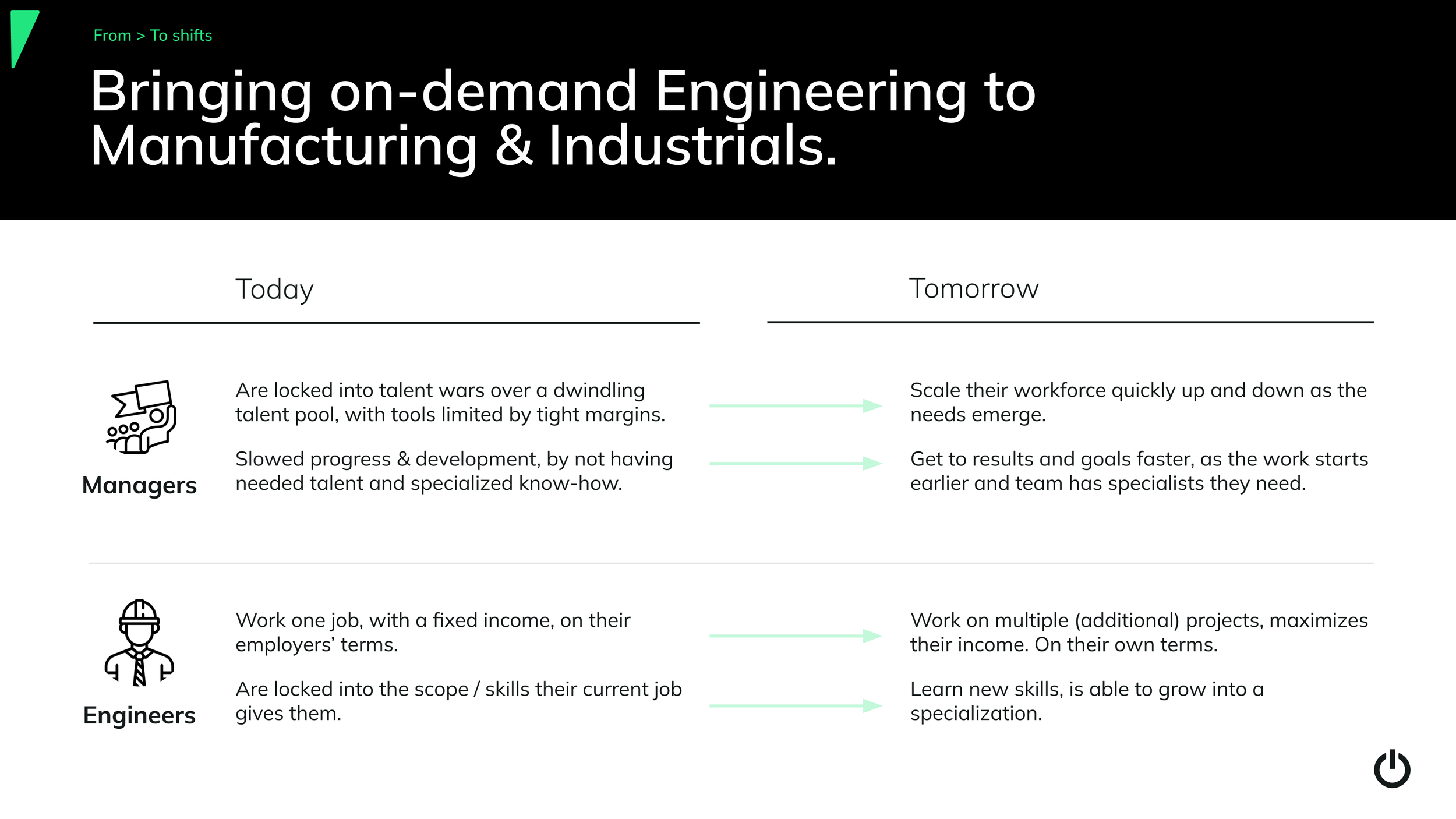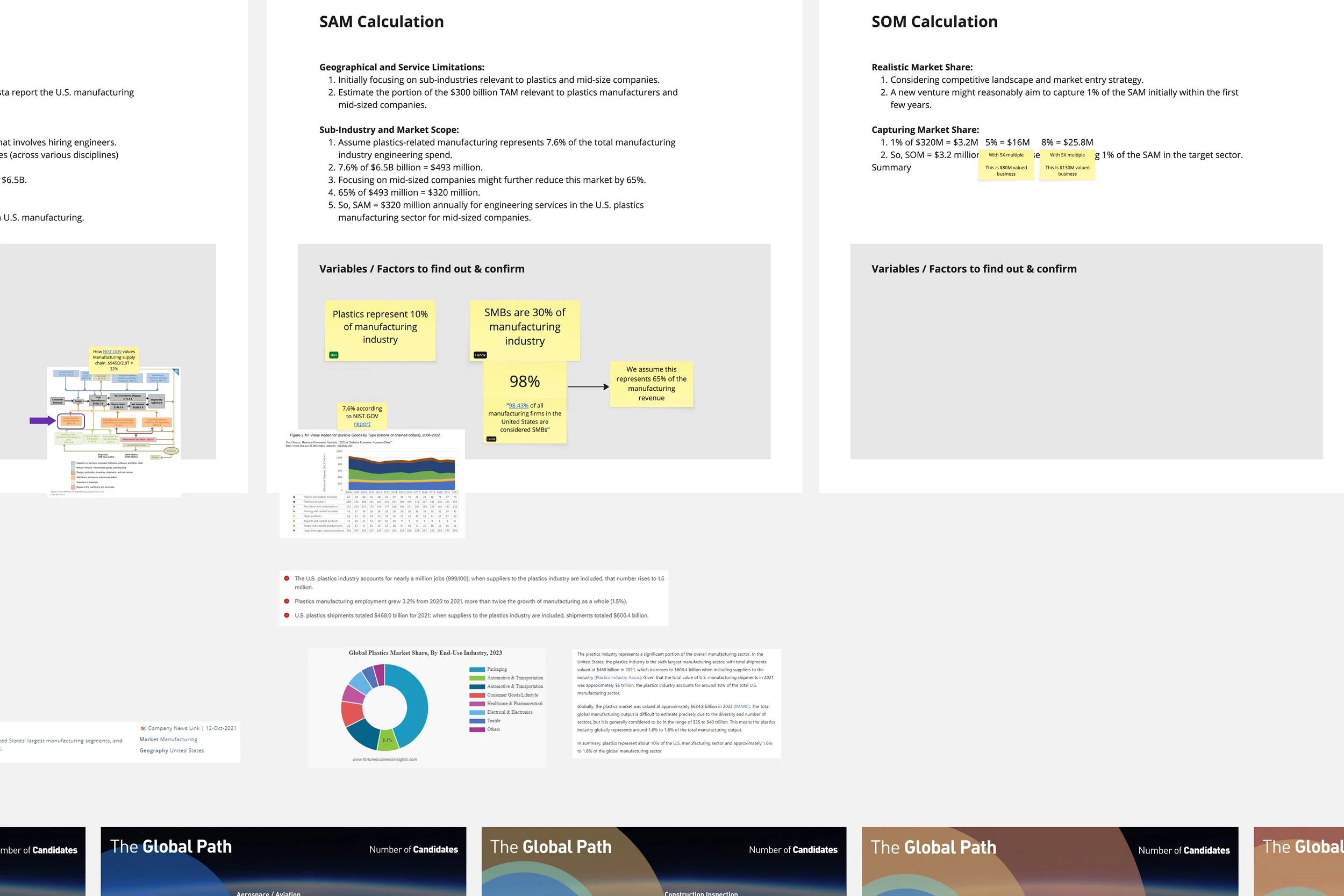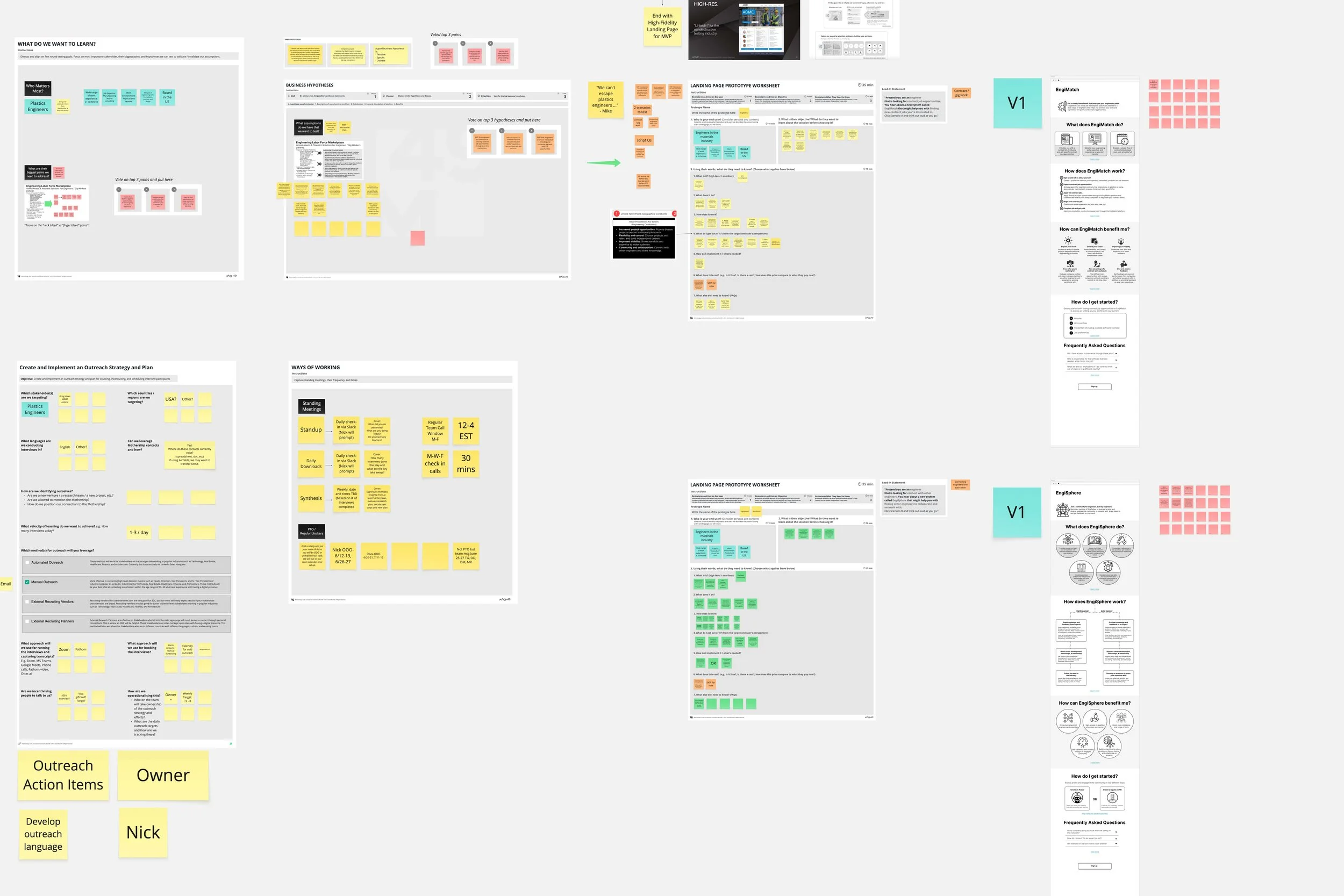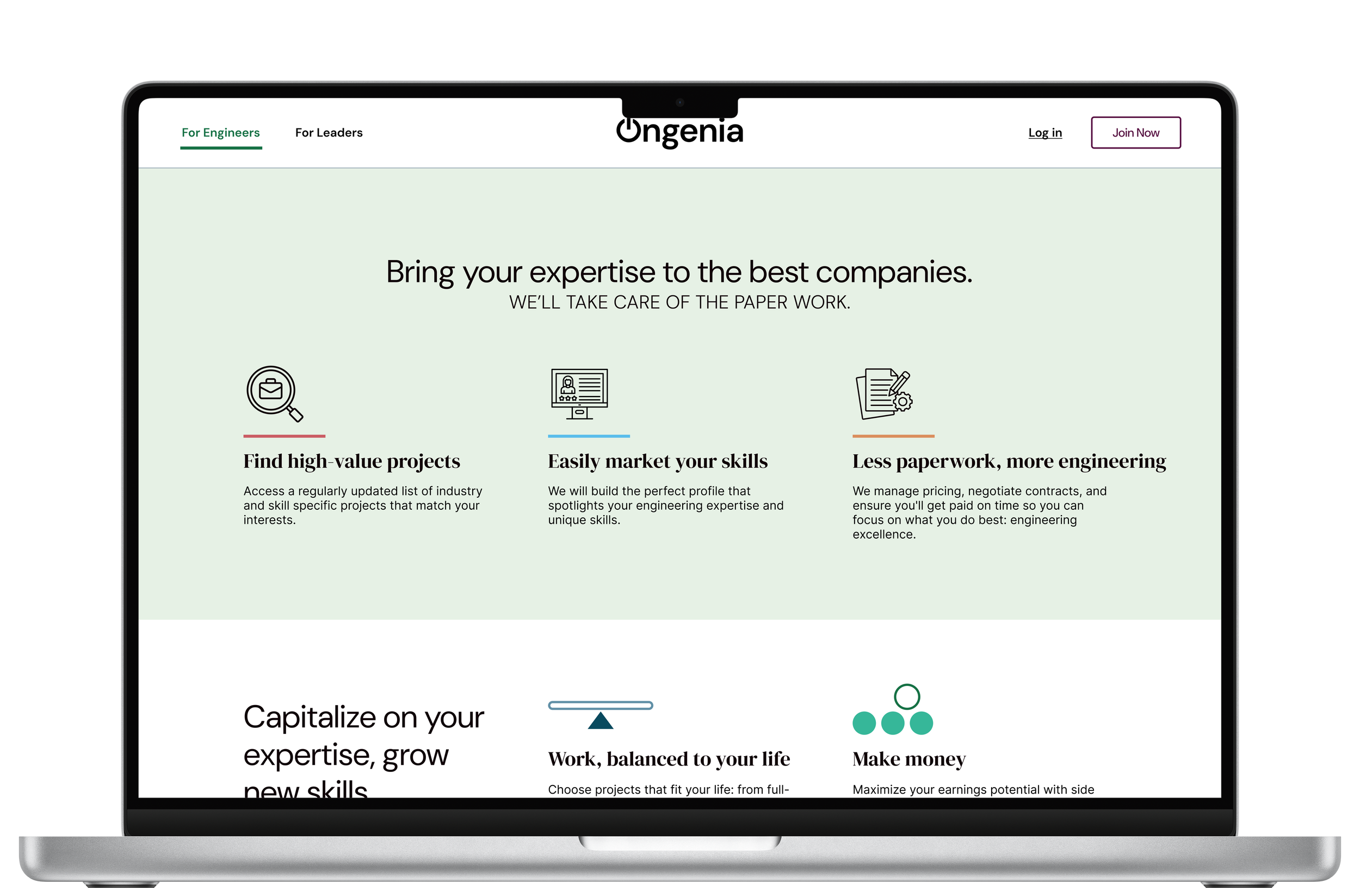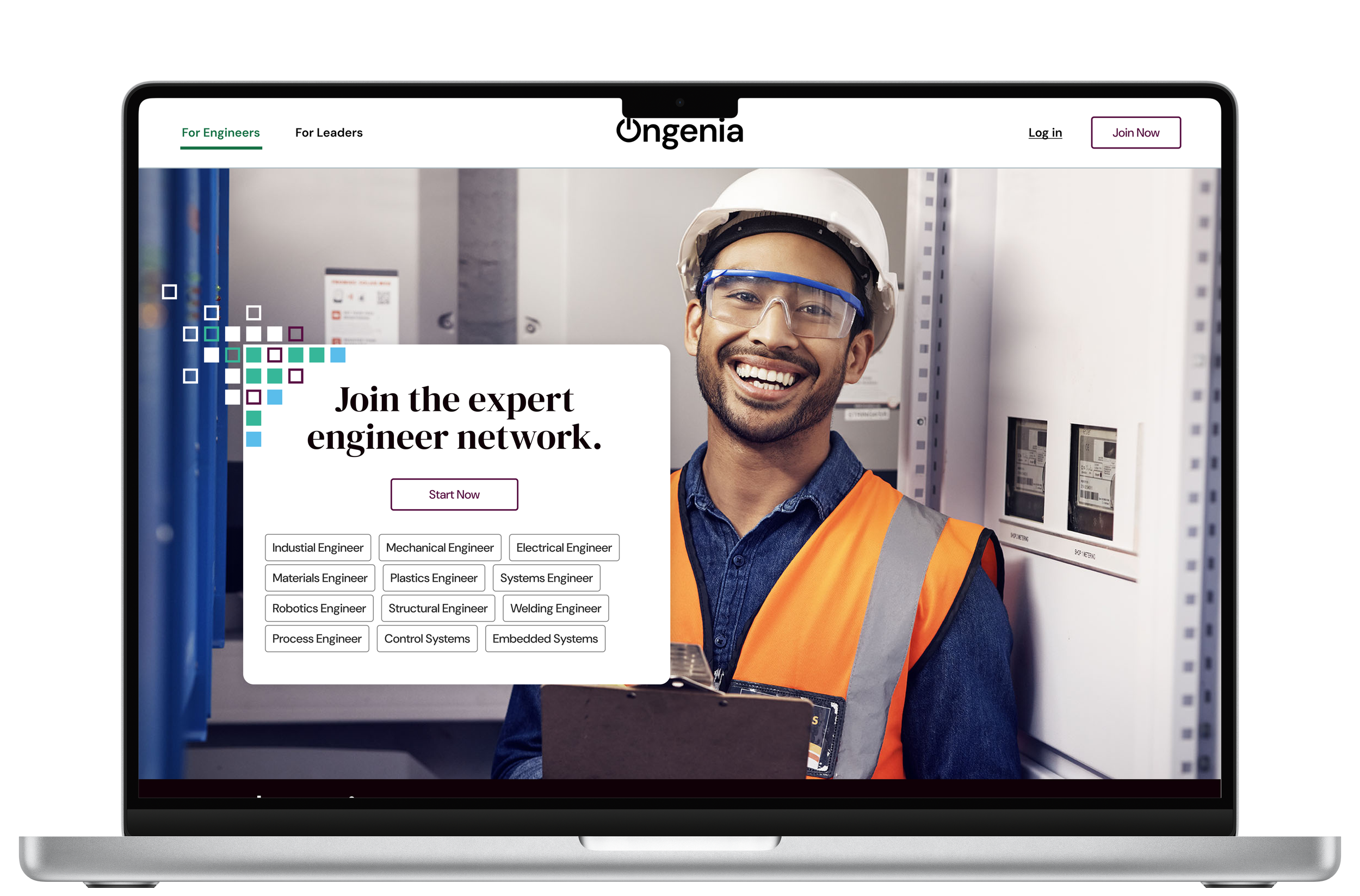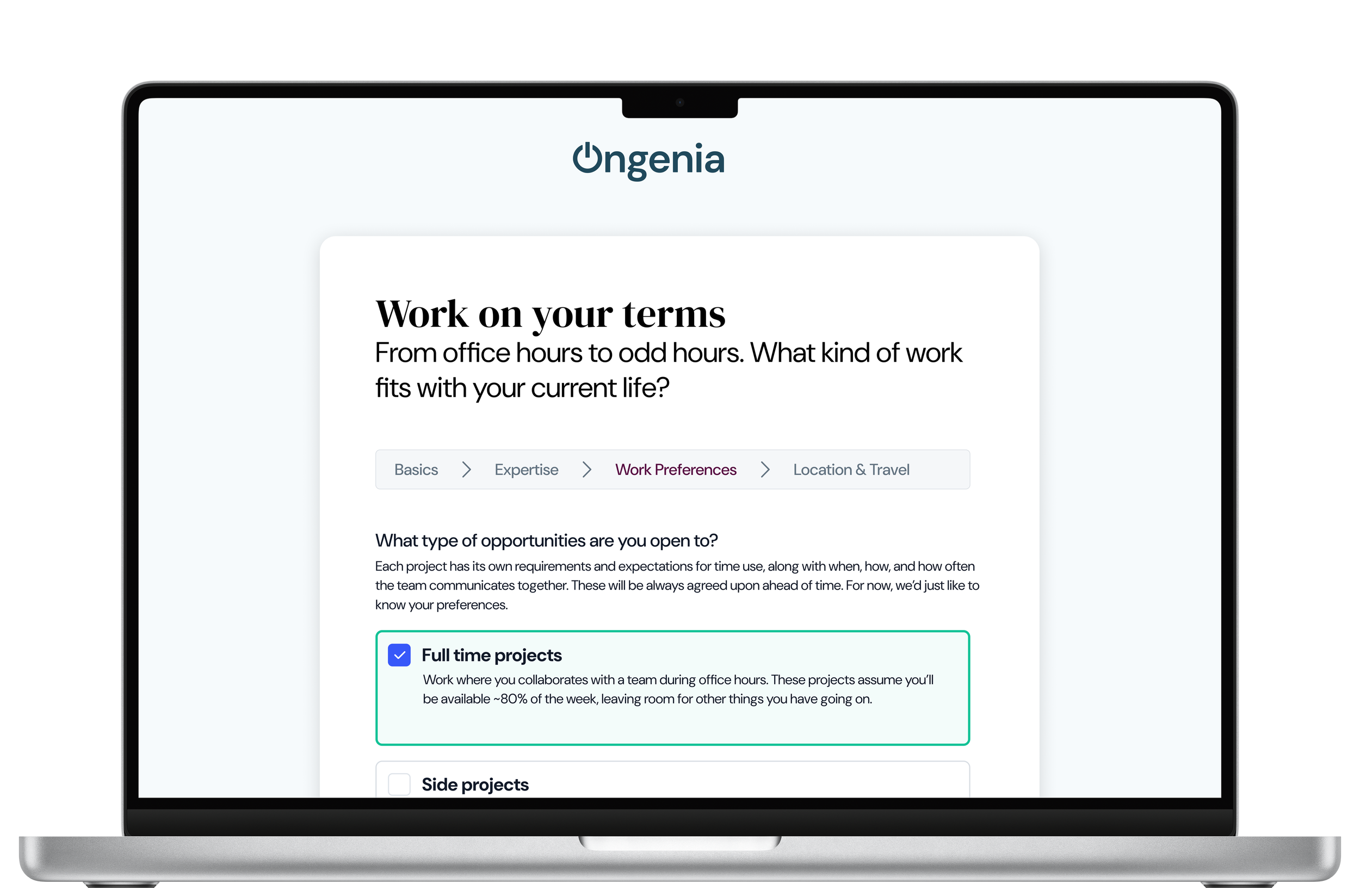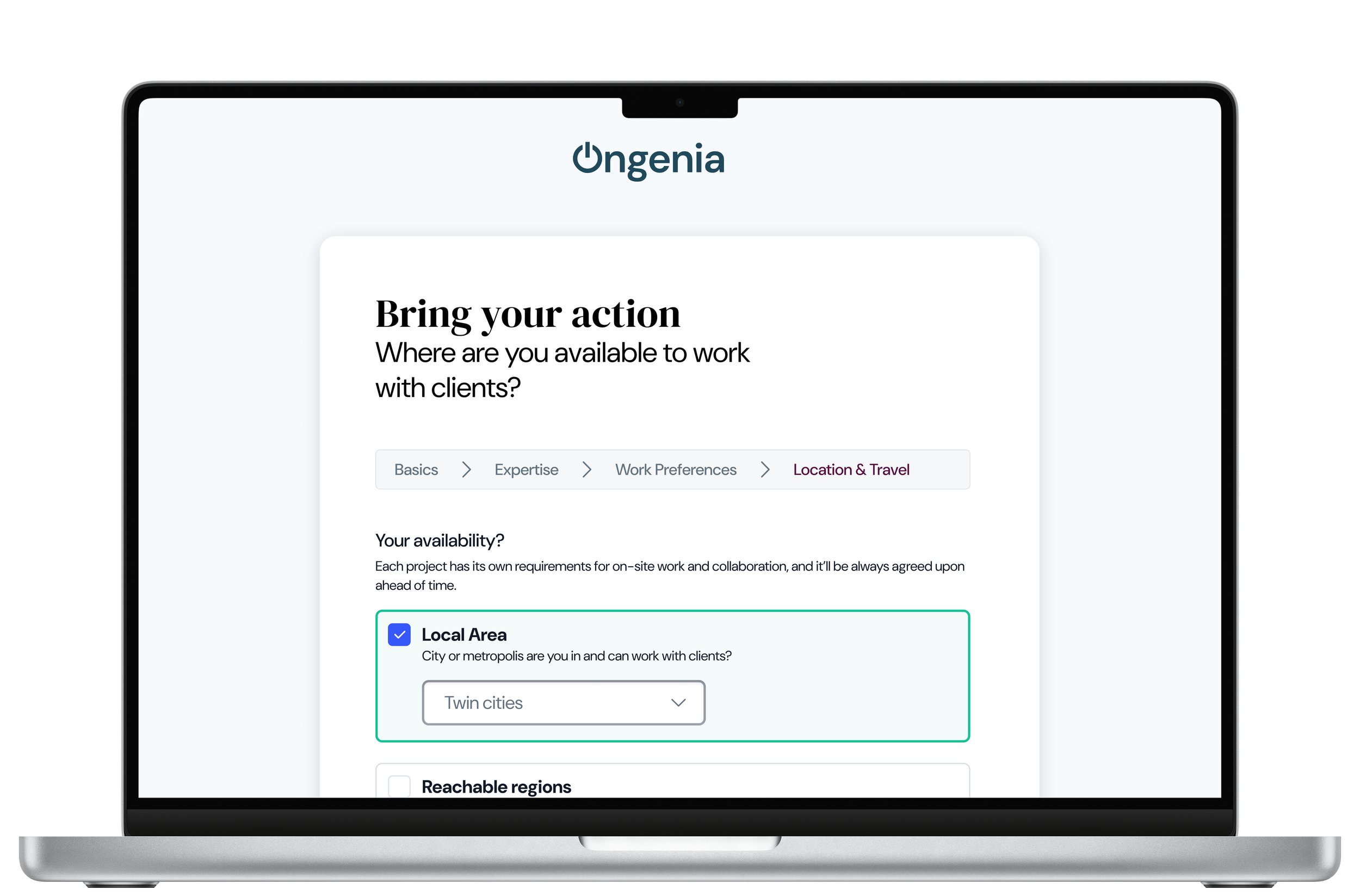Ongenia
Closing the engineering talent gap with on-demand expertise
The Challenge
Manufacturing and industrial companies across the U.S. are facing a critical shortage of engineering talent. Roles remain open for a month or longer on average, slowing progress and forcing managers into costly “talent wars.” Meanwhile, engineers are open to on-demand work but haven’t tried freelancing; mostly because many lack confidence in finding contract jobs, negotiating pay, or don’t want to deal with handling extra paperwork. Both sides are stuck in outdated models: companies default to full-time employees, and engineers stay locked in traditional jobs, leaving an untapped supply and unmet demand.
The Approach
Rather than a classic Incubation, this project was conducted as an 8-week product sprint. Our client, Tek Ventures (the venture arm of Teknor Apex), already had a solution in mind and needed help validating product + market fit. Over the course of those 8-weeks, I led the project team as Lead Entrepreneur in Residence and guided them through the following process:
Defining an opportunity statement that hypothesized the connection of their proposed solution (value proposition) and the potential pain points of engineers and employers.
Teaching and modeling how to do customer research and product design:
Brainstorm and prioritize research learning goals
Create interview guides and test stimuli to obtain desired data
Run interviews with any relevant stakeholders, document unbiased notes, and synthesize findings into actionable next steps
Use customer discovery data to confidently inform a product strategy, MVP, and pilot program
Build a sales pipeline of potential customers and run calls to gauge interest in a pilot program
Develop a three-month operating plan post-sprint to validate customer traction and hit necessary KPIs in order to continue
The Process
The team set out to validate whether a two-sided marketplace could unlock this opportunity. My contributions included:
Conducting interviews with 28 engineers and managers across the U.S. manufacturing sector to map pains, behaviors, and readiness for change
Developing customer personas to frame both sides of the problem
Prototyping multiple solution concepts (EngiMatch, EngiSphere, CompTrack) and testing desirability, with the best-scoring prototypes achieving 8.1–8.4 desirability ratings
Market sizing and competitive landscape analyses
Designing and launching an MVP “wedge” experience, including a landing page, onboarding flow, and early supply-demand matchmaking
The Solution
Upon validating a strong value proposition via the EngiMatch concept, we refined it further with prioritized features for an MVP and launched Ongenia– a platform connecting specialized engineers with manufacturing companies for on-demand projects. The model is built around reducing friction for both sides:
For Engineers: Access to high-value projects, seamless creation of marketable profiles, and administrative services (pricing, contracts, payments)
For Managers: A vetted talent network, ready-to-use project descriptions, and candidate matching tools to quickly hire engineers at scale
The MVP leveraged a digital sign-up flow, profile creation, and early (manual) matchmaking across three real projects within the core business. Seeing whether engineers would even sign up and build a profile, if managers could craft quick project descriptions, and if our team could quickly facilitate a strong match was key to refining assumptions, reducing critical risks to success, and testing true willingness to pay.
Landing Page & Sign Up Flow
The Impact
The early sprint proved that there’s strong appetite on both sides of the marketplace. Engineers were eager to explore flexible work, and managers validated that an on-demand model could solve critical hiring bottlenecks.
Market Validation: Both engineers and managers showed strong interest, with engineers motivated by professional growth and managers intrigued by faster, lower-cost hiring.
Early Traction: Within 8 weeks, the team sourced candidates for 3 live projects, with 2 matches under evaluation
Customer Praise: Engineers called the platform “everything we are looking for,” while managers highlighted how it solves a major gap in finding the right-fit talent
Financial Potential: Modeled revenue shows ~$1,200 per filled job plus $200/month platform fees, with a clear path to scaling into other verticals like chemical, food & beverage, and petroleum
A retrospective written by the new venture team I led for this project regarding the triumphs and tribulations they experienced during the process of building a new venture inside an established corporation. They explicitly added this into their presentation to their board when pitching because of how transformative the experience was for them!
Reflection:
From the Inside Out
Ongenia showed how even entrenched hiring models can be disrupted when both sides of the market see real, immediate value. By starting manually and testing assumptions in-market, we built credibility and trust with early adopters—validating that engineers were open to freelancing and managers intrigued by faster, lower-cost hiring.
However, in the post-sprint phase, further testing revealed a structural challenge: the market’s reliance on full-time roles made it difficult for companies to shift meaningfully toward fractional or freelance engineering work. Despite strong signals of interest, the adoption barriers proved too high for Ongenia to scale sustainably at that time.
For me, this project reinforced two key lessons: the power of lean, service-heavy wedges to unlock early traction, and the equal importance of recognizing when structural market dynamics limit viability. Knowing when to stop is just as critical to venture building as knowing when to scale.

